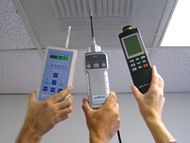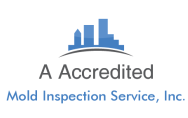Need Indoor Air Quality Testing in Ft Lauderdale?
Give us a call:
1-888-381-6651
We provide professional services. Your local consultant has a CIEC Certification or Certified Indoor Environmental Consultant Certification. Eight years of experience are required to be eligible to obtain a CIEC certification. In addition, our local ft lauderdale indoor air quality testing consultant is also a fully licensed mold assessor.
We provide testing for:
Formaldehyde
VOC’s or volatile organic compounds
Odors
Dust mite, cat, dog, and cock roach allergens
Humidity issues
Water intrusion problems
Bacteria
And of course mold
You must always let us know in advance what your specific needs, concerns, or problems are.
To learn more about why you should use us click here and see our homepage.
So, if you need indoor air quality testing or IAQ testing anywhere in Broward County give us a call, we can help. 1 888 381-6651
Below Is Information on The Most Common Indoor Pollutant Tested for By Our Consultant In
Ft Lauderdale.
VOC’S
CARBON MONOXIDE
AND CARBON DIOXIDE
CARBON MONOXIDE
Carbon monoxide is a very serious concern in regard to indoor air quality, the reasons are twofold:
1) It is commonly produced by fuel burning devices in buildings.
2) It is 250 times more reactive than oxygen when it comes to binding with hemoglobin in blood cells.
When inhaled carbon monoxide can result in adverse health problems including dizziness, light headiness, shortness of breath, and nausea.
Exposure to carbon monoxide can simply cause a person to feel sleepy, and at high levels exposure can next lead to a coma or even death. Carbon dioxide results in more accidental poisoning fatalities in the United States than any other indoor air quality problem. A skilled indoor air quality investigator should check for this gas if combustion devices such as gas stoves, gas water heaters, oil burning house heaters, or other combustion devices are present. One must keep their eyes open for potential dangers related to this colorless odorless killer.
Carbon monoxide poisoning and even CO related deaths are far more common than many people realize, here are details on two examples we have dealt with:
Case Study 1
1) While our Ft Lauderdale indoor air quality testing consultant was preforming an investigation at a large Palm Beach home our consultant observed a gas-powered whole house emergency generator located only a few foot from an open window.
Use of the generator with windows open could have resulted in large amounts of CO entering the home.
Case Study 2
2) In a small Fort Lauderdale Florida home while conducting indoor air testing several potentially problematic holes were observed by this air quality consultant. These holes were in the exhaust pipe above a gas water heater in the garage. This exhaust pipe was intended to vent fumes containing un healthy gases including carbon monoxide to the exterior, however these holes were allowing the fumes to enter the garage. In addition, holes were observed in the garage wall very near the water heater, these holes could have allowed contaminated garage air into the home. This was the worst possible combination of holes and could have easily resulted in carbon monoxide poisoning.
CARBON DIOXIDE
Carbon dioxide does not typically appear in indoor air at levels that would result in negative health effects. Despite not directly being a harmful indoor pollutant, its levels are often tested by air quality consultants. If not harmful, why is it tested? Because elevated levels of carbon dioxide will indicate that a building is not taking in adequate levels of fresh outdoor air to simultaneously flush out both harmless carbon dioxide and a whole host of more problematic indoor pollutants.
In other words if ventilation of fresh outdoor air is low and carbon dioxide levels are high as a result, then levels of many other indoor pollutants will also be high. It is common knowledge that buildings will low levels of fresh outdoor air and high levels of carbon dioxide are problematic. They are more likely to be associated with indoor air quality health related complaints. In such buildings we expect to find more VOC’s and more musty stagnant air. It is cheaper and easier to test for carbon dioxide than for each and every potential indoor air pollution component.
Carbon dioxide levels should be no more than 700 ppm higher than outdoor levels.
VOLATILE ORGANIC COMPOUNDS
What are VOC’s or Volatile Organic Compounds? They are chemicals that evaporate into your homes air at room temperature, and they contain carbon. Such chemicals cause health complaints and odors.
They are typically released from man-made building materials and personal care products that are all extremely common in homes and other buildings. When we provide indoor air quality testing services in Ft Lauderdale, this is what we test for most often.
VOC Levels
Dozens of VOC’s are typically floating around indoors. When these VOCs are added together you get total VOC levels, such cumulative levels must not be ignored, and you must consider the cumulative effects of several chemicals added together and not just look at the individual levels of compounds.
Case Study Typical Simple Test
It would not be surprising for a sensitive person to get sick when considering total levels when the levels of the individual components may not be unusual. Such as the case with a female client in a high-rise condo in Aventura Fl. She did not have any one indoor air chemical that was at problem levels. However, she had so many chemicals from so many sources in her air that when considered all together they were a concern. This is very common with both commercial and residential indoor air quality testing in.
In addition, many chemicals may have synergistic effects thus the sum of the parts is more that the individual parts, in other words chemicals sometimes mix together to make more potent mixtures than you started out with.

Three tools for testing indoor air quality including a formaldehyde meter left, a photoionization detector center, and a particle counter right.
Do you have unusual sulfur, chemical, musty, animal or unidentifiable odors in your commercial or residential building?
Suffering from nausea, dizziness, headache or allergy like symptoms?
You may need the services of an indoor air quality testing company in Fort Lauderdale.
Or you may need a mold inspector to conduct air testing and investigations designed to aid in identifying possible mold problems.
Call us Today
1 888 381-6651


